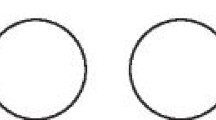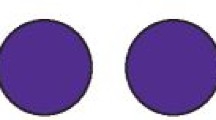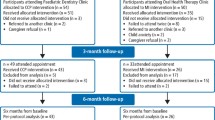Abstract
Data sources
PubMed, Scopus and Embase were searched from 2000 to 2016.
Study selection
A search strategy was developed to identify randomised clinical trials, cross-sectional studies, cohort studies, comparative studies, validation studies and evaluation studies that tested standardised caries risk assessment (CRA) models. There was no restriction with respect to patients' age, but caries data should have been recorded using the Decayed, Missing, Filled Tooth/Surface (DMFT/S) or the International Caries Detection and Assessment System (ICDAS) indices.
Data extraction and synthesis
Two authors independently assessed the papers for inclusion, carried out data extraction and the papers' methodological quality using a customised quality assessment tool developed by the National Heart, Lung and Blood Institute and Research Triangle Institute International for Observational Cohort and Cross-Sectional Studies. For comparison between studies, the caries values were organised in two-by-two tables from which sensitivity, specificity values and their 95% confidence intervals were calculated.
Results
A total of 1239 papers were retrieved of which 32 were included. The most frequent CRA model investigated was the Cariogram. Sixteen studies were carried out on children and 12 on adults. The results showed an association between the risk determined by the model and the actual caries status and/or the development of new carious lesions, this association being statistically significant. With respect to the quality of the studies included in the review, 19 were classified as of good quality, while eight and five were judged as of fair and poor, respectively. On the basis of seven studies, it was observed that Cariogram sensibility varied from 41.0 to 75.0, while its specificity ranged from 65.8 to 88.0.
Conclusions
There is insufficient evidence to assert that CRA models are effective in determining patients' actual caries risk or in predicting their probability of developing new carious lesions. Moreover, the validity of standardised CRA models is still limited.
Similar content being viewed by others
Log in or create a free account to read this content
Gain free access to this article, as well as selected content from this journal and more on nature.com
or
References
Bratthall D, Petersson G . Cariogram - a multifactorial risk assessment model for a multifactorial disease. Community Dent Oral Epidemiol 2005; 33: 256–264.
Featherstone JD, Adair SM, Anderson MH, et al. Caries management by risk assessment: consensus statement, April 2002. J Calif Dent Assoc 2003; 31: 257–269.
Gao XL, Hsu CY, Xu Y, Hwarng HB, Loh T, Koh D . Building caries risk assessment models for children. J Dent Res 2010; 89: 637–643.
Celik EU, Gokay N, Ates M . Efficiency of caries risk assessment in young adults using Cariogram. Eur J Dent 2012; 6: 270–279.
Hänsel Petersson G, Fure S, Bratthall D . Evaluation of a computer-based caries risk assessment program in an elderly group of individuals. Acta Odontol Scand 2003; 61: 164–171.
Petersson GH, Twetman S . Caries risk assessment in young adults: a 3 year validation of the Cariogram model. BMC Oral Health 2015; 15: 17.
Author information
Authors and Affiliations
Additional information
Address for correspondence: Maria Cagetti, Department of Biomedical, Surgical and Dental Sciences, University of Milan, Via Beldiletto 1, 20142 Milan, Italy. E-mail: maria.cagetti@unimi.it
Cagetti MG, Bontà G, Cocco F, Lingstrom P, Strohmenger L, Campus G. Are standardized caries risk assessment models effective in assessing actual caries status and future caries increment? A systematic review. BMC Oral Health 2018; 18: 123. doi: 10.1186/s12903-018-0585-4. PubMed PMID: 30012136; PubMed Central PMCID: PMC6048716.
Rights and permissions
About this article
Cite this article
Leal, S. Are standardised caries risk assessment models effective?. Evid Based Dent 19, 102–103 (2018). https://doi.org/10.1038/sj.ebd.6401338
Published:
Issue date:
DOI: https://doi.org/10.1038/sj.ebd.6401338
This article is cited by
-
Predictive validity and cost-effectiveness analysis of two caries risk assessment tools for preschool children
BMC Oral Health (2025)
-
Might one simple question indicate a child's caries risk and guide preventive advice?
British Dental Journal (2019)



